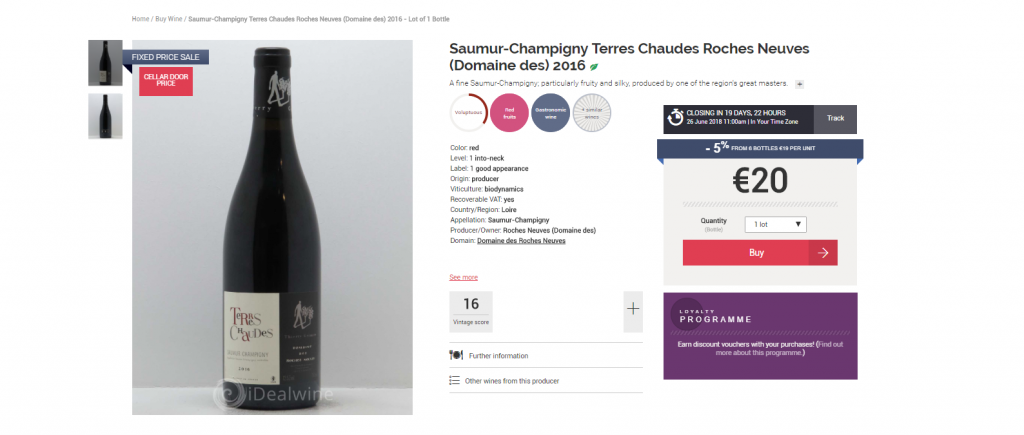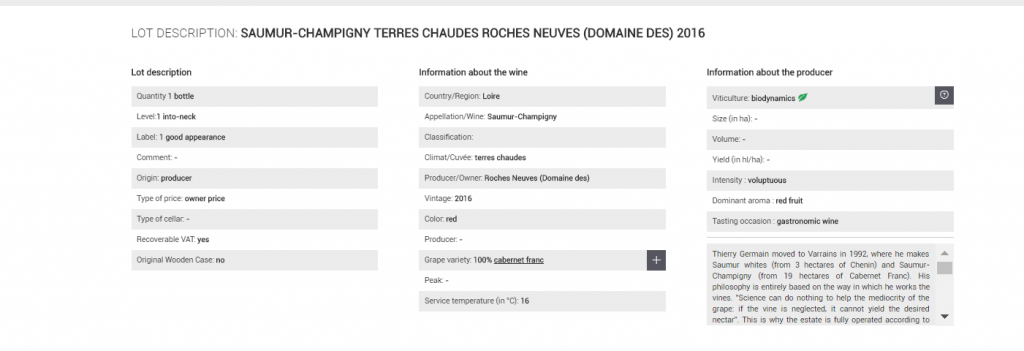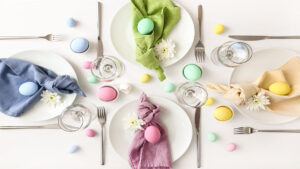 We’ve all been there…picking a good wine can be a daunting task, especially when you don’t know much about the subject! While there isn’t a one size fits all solution, a few tips on what to look out for can go a long way. Here are the 10 golden rules to follow when choosing a bottle.
We’ve all been there…picking a good wine can be a daunting task, especially when you don’t know much about the subject! While there isn’t a one size fits all solution, a few tips on what to look out for can go a long way. Here are the 10 golden rules to follow when choosing a bottle.
As you can imagine, most of the team at iDealwine are complete wine nerds who how to spot a good bottle. We’ve pooled together our top tips for those picking a wine with little or no previous knowledge.
The 10 Golden Rules for choosing a wine
Be curious and open
The world of wine is incredibly complex and throwing yourself into it is the best advice we can give you. A little basic knowledge goes a long way so don’t swallow a wine encyclopaedia but, rather, read articles on wine that pique your curiosity (like those on Le Blog) or subscribe to a wine magazine. Not everything can be learned from a book and attending tastings and masterclasses or buying bottles to try at home is crucial. Keep tasting and you’ll soon have an idea of what it is you like
Avoid buying wine from supermarket chains
Unless you know what you’re doing, negotiating supermarket wine can be risky. Having someone on hand who can talk you through the range is always important (especially for beginners) and supermarkets are unable to offer this service. The mammoth choice can be intimidating and too often the big supermarkets will favour wine produced in bulk quantities. While it’s possible to find good mass-produced wine, it can be difficult to spot them amongst the overwhelming choice. The most reputable domains will often refuse their wines to supermarkets so its better to pay a visit to a wine merchant (or wine e-merchant!) who will not only most likely have a more qualitative selection but who will also be able to offer advice and recommendations.
At iDealwine.com you’ll find everything you need to navigate the world of wine, from vintage charts and region guides to detailed information on every wine sold on our site such as the grape variety, how it was made, the domain, tasting notes, storage advice and pairing suggestions as well as its price evolution over the years.
An example from our website:

 Understand how to read a wine label
Understand how to read a wine label
Our first word of warning when it comes to reading a label is that the words “grand vin” mean nothing! Any wine produced under an AOC classification can write this on their label. The same goes for the rather impressive sounding “veilles vignes” (meaning ‘old vines’), don’t be fooled. The mention of “cru” can be interesting but, again be wary: “grand crus classés” are a gage of quality when they refer to a serious classification (1855 classification, Graves classification, Saint-Emilion classification). In Burgundy, “premier cru” and “grand cru” give a good idea of the quality of the terroir from which the wine has come, a “grand cru” generally being the most complex, deep and cellar worthy Burgundies. If there is any mention of “cru” on the label, be sure to check that the wine belongs to an AOC as this means that it has been made in accordance with the strict regulations that the AOC impose. Note that there are some excellent wines made outside the AOC restrictions (Vin de France) and, inversely, some not so great AOC wines! The vintage often gives a good indication of how the wine will taste (depending on whether it was a hot year or a cold year) and its cellaring potential.
Know the difference between wines to cellar and wines to drink young
Before choosing a wine, it’s important to know whether you want a bottle to enjoy now or put in your cellar as this will inform your choice. If you want to buy a wine to enjoy in the next few months or years, it’s best to go for a supple wine that isn’t too full-bodied. Certain grape varieties and appellations produce wines that are more apt to cellaring, for example, a grand cru classé from the Médoc (in a recent vintage) will age better than a Provence rosé. If you want a bottle to drink now, be careful not to buy a cuvée that needs a few years in the cellar, it would be a great shame to open it too soon. The best wines for cellaring are those from reputable domains that have great balance (acidity being particularly important when it comes to ageing), concentration and tannic structure. They are wines that, during the winemaking process, will have most likely undergone a long maturation.
Choose a good vintage
While vintages aren’t the be all and end all, they aren’t to be neglected! In terms of recent vintages, it’s worth noting that 2016, 2015, 2010 and 2009 were good nearly everywhere in France. For a more detailed look at the vintages region by region, consult our vintage guides on Le Blog or our vintage chart.
Pair your wine with the right food
You probably already know that, broadly speaking, white wines go better with fish and white meat while red wines pair well with red meat. And, broadly speaking, this is correct! Go with your instinct on this, it generally won’t fail you. As for cheese, stronger cheeses are a better match with red wines while other styles work well with white. Blue cheese, however, is magnificent with sweet wine and old comté and Vin Jaune are a match made in heaven!
Take advice from people you trust
Don’t hesitate to ask people who know about wine and who share similar tastes to you, they’ll be flattered you asked. Wine critics and other professionals are another good source of recommendations and can help you discover excellent wines.
Don’t let price be the guiding factor
Of course, price often correlates to quality but the many exceptions to this rule makes it an untrustworthy gauge of quality. Wines destined to be drunk young are generally cheaper than cellaring wines but can be just as delicious and every region has its share of lesser known domains that offer excellent wines at excellent prices. Our permanent collection of Must-Haves brings together our top recommendations from all the different winemaking regions at ‘discovery’ prices.
Trust the big names, but take risks every now and then
Even neophytes have heard of the most mythic wines in the world. Know that these wines have a reputation for a reason and rarely deceive, especially when considered independently of their price (which is often rather high). It’s not just the iconic wines, domains that have established a solid reputation are generally safe bets. Despite this, we urge you to stray off the beaten track and satisfy your curiosity. Try a wine from a domain that catches your eye (start with their cheapest wine) and then try another one! Experiment and have fun with your discoveries.
Taste, taste, taste!
It’s hardly surprising that the more you taste, the better idea you’ll have of your preferences. Once you know what you like (and don’t like) you can begin to identify your favourite regions, appellations and producers. Don’t be shy to take copious notes on the wines you like and didn’t like! Having a record of the wines you have tasted is always a useful reference and makes for pleasant reading!
Equipped with these golden rules you’re ready to choose your next bottle, santé!
See all wines currently on sale
Search the price of a wine
Not yet registered to buy wines with us? Sign up here for free!
Other things to read on the iDealwine blog:
A classic cheese and wine pairing



